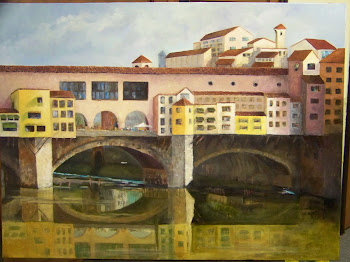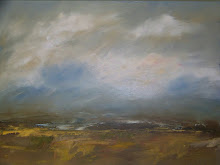 I am planning the food for our Oktoberfest event at the vineyard on October 11th. When I start thinking about German food, dear sweet Arch is right there telling me what to fix! He did love German food! So, in his honor I will share a favorite recipe of his. Before we were married, Arch was a bachelor for 13 years. He learned to cook for one, but his favorite recipes were those he collected as he was stationed around the world. He did 2 tours in Germany, and loved it.
I am planning the food for our Oktoberfest event at the vineyard on October 11th. When I start thinking about German food, dear sweet Arch is right there telling me what to fix! He did love German food! So, in his honor I will share a favorite recipe of his. Before we were married, Arch was a bachelor for 13 years. He learned to cook for one, but his favorite recipes were those he collected as he was stationed around the world. He did 2 tours in Germany, and loved it.Hope you enjoy
Arch’s Steamed Clams with Bacon and Beer
4 slices bacon, chopped
1 small onion, chopped
2 cloves garlic, chopped
3 pounds small clams, scrubbed well
1 cup German style beer (Arch loved Leinenkugel and Warsteiner…actually, Arch never met a beer he didn’t love!)
Fry the bacon in a medium pot until soft and golden, about 4 minutes. Add the onion and garlic and continue cooking until the bacon is nicely browned and onion is tender, about an additional 4 minutes.
Stir in the clams and add the beer. Cover the pot and steam the clams for 6 to 7 minutes, until they open. Discard any clams that do not open.
Stir gently to mix with the bacon, garlic and onion. Serve immediately. Serves 4
Serve with a salad and hot crunchy bread….Ah-h-h-h, delightful!
Jackson Pollock
 Decoding Jackson Pollock
Decoding Jackson PollockDid the Abstract Expressionist hide his name amid the swirls and torrents of a legendary 1943 mural? An art historian makes the case for a signature gesture
By Henry Adams
Smithsonian magazine, October 2009
It was my wife, Marianne Berardi, who first saw the letters.
We were looking at a reproduction of Jackson Pollock's breakthrough work, Mural, an 8-by 20-foot canvas bursting with physical energy that, in 1943, was unlike anything seen before.
The critic Clement Greenberg, Pollock's principal champion, said he took one look at the painting and realized that "Jackson was the greatest painter this country has produced." A Museum of Modern Art curator, the late Kirk Varnedoe, said Mural established Jackson Pollock as the world's premier modern painter.
I was researching a book about Pollock's lifelong relationship with his mentor, Thomas Hart Benton, the famed regionalist and muralist, when I sat puzzling over a reproduction of Mural after breakfast one morning with Marianne, herself an art historian. She suddenly said she could make out the letters S-O-N in blackish paint in the upper right area of the mural. Then she realized JACKSON ran across the entire top. And finally she saw POLLOCK below that.
The characters are unorthodox, even ambiguous, and largely hidden. But, she pointed out, it could hardly be random coincidence to find just those letters in that sequence.
I was flabbergasted. It's not every day that you see something new in one of the 20th century's most important artworks.
I'm now convinced that Pollock wrote his name in large letters on the canvas—indeed, arranged the whole painting around his name. As far as I can tell, no one has previously made this assertion. Nor is there evidence that Pollock himself, who was loath to talk about his art and left behind few written records, ever mentioned this coded gesture.
I've shared my theory with several Pollock experts. They've had mixed reactions, from "no way" to "far-fetched" to "maybe."
"It's feasible," says Sue Taylor, an art historian at Portland State University, who has studied Pollock's 1942 canvas Stenographic Figure, which includes written symbols. "Pollock would often begin with some sort of figurative device to which he would then respond—and eventually bury under layers of paint. Letters and numbers, moreover, frequently appear in works of the early 1940s."
It may not be possible to answer the question definitively unless scientists use X-ray scanning or some other method to trace which pigments were put down first. At the moment there are no plans to do such an analysis.
If my theory holds up, it has many implications. Mural, commissioned by the collector Peggy Guggenheim for her New York City apartment, is the stuff of legend. Owned by the University of Iowa since Guggenheim donated it in 1948, the painting is said to be worth $140 million. (A later Jackson Pollock painting, Number 5, 1948, reportedly sold in 2006 for $140 million—the highest price ever paid for a work of art.) Mural is so central to the Pollock mystique that in the 2000 movie Pollock, the artist (played by Ed Harris), having stared perplexedly at a giant empty canvas for months, executes Mural in a single session the night before it's due to be delivered. That (standard) version of events, originally advanced by Pollock's wife, the artist Lee Krasner, reinforces the image of Pollock as an anguished, spontaneous genius. But the art critic Francis V. O'Connor has debunked the story, saying Pollock probably executed Mural during the summer of 1943, not in one night in late December.
Pollock's possibly writing his name in Mural testifies to an overlooked feature of his works: they have a structure, contrary to the popular notion that they could be done by any 5-year-old with a knack for splatters. In my view, Pollock organized the painting around his name according to a compositional system—vertical markings that serve as the loci of rhythmic spirals—borrowed directly from his mentor, Benton.
Pollock had studied under Benton for two years and once told a friend that he wanted Mural to be comparable to a Benton work, though he didn't have the technical ability to make a great realistic mural and needed to do something different.
I have found no evidence that Pollock wrote his name in such fashion on any other canvas. In a way, that makes sense. To Pollock, I think, Mural announced that he was replacing Benton, a father figure whom he once described as "the foremost American painter today." It was Pollock's way of making a name for himself.
Henry Adams is the author of Tom and Jack: The Intertwined Lives of Thomas Hart Benton and Jackson Pollock, to be published in November by Bloomsbury Press.
Find this article at: http://www.smithsonianmag.com/arts-culture/Decoding-Jackson-Pollock.html?utm_source=dedicated09252009&utm_medium=email&utm_campaign=JacksonPollock





